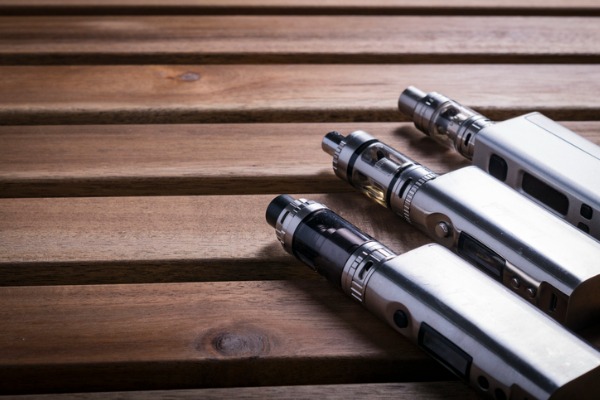Stockwatch: four share tips to keep hold of
A year ago, these stock tips were riding high and analyst Edmond Jackson backed them all to do well again in 2023. He explains what happened and why they’re still worth owning.
22nd December 2023 09:05
by Edmond Jackson from interactive investor

A year ago, when reviewing stocks I covered in 2022, I applied a heading “Stalwarts for a long hard recession” to AstraZeneca (LSE:AZN) up 30% that year, BAE Systems (LSE:BA.) up 20%, British American Tobacco (LSE:BATS) up 18% and pawnbroker H&T Group (LSE:HAT) up 44%. They marked a collective annual advance of 28% with dividends taking the total return into a 30% range.
This was not proclaimed as a model portfolio, and a 12-month time frame to assess investments can be notional. But it is pertinent to consider why this “Fab Four” of defensive-type stocks has barely managed a flat performance in 2023 – down nearly 5% overall in capital terms, with dividends making it marginal.
- Our Services: SIPP Account | Stocks & Shares ISA | See all Investment Accounts
Two key aspects seem involved: capital shifting between classic “growth” and “value” stocks according to expectations for inflation and interest rates. Second, and which is the case for British American Tobacco, how “value” can mask a declining business. Yet BAT is a similar beast as Philip Morris International Inc (NYSE:PM), which enjoys twice BAT’s price/earnings (PE) multiple despite only half its yield.
In principle, growth and value are joined at the hip, investment value being the net present value of future cash flows, with growth a key element. Even if a business is mature, its stock can offer value, or a growing business be overvalued.
Wider sentiment still tends to shift between the two styles: growth stocks on high PE’s and zilch yields being favoured in a low or falling interest rate environment; or shunned in favour of low PE/high-yield stocks when rates are expected to rise.
Yet I seemingly included two growth-type plays by way of AstraZeneca and BAE, versus classic value in BAT and H&T. Macro trends are not a satisfactory explanation, so let us look more specifically at these stocks, given “run your gains” is meant to be a key investment rule.
AstraZeneca – down 6% in 2023
Having originally argued a “buy” case at 7,100p in February 2021 – half the company’s revenue deriving from faster-growing new medicines – and with the price at around 11,150p a year ago, I thought it a fair “hold”.
A forward PE around 19 times and modest 2.2% yield looked full, but healthcare is defensive and, if sentiment turned against it, there could be scope to add.
Astra had tested 12,300p by late April then went into a volatile downtrend, reaching 9,900p in late November. But it has rebounded to 10,484p after a non-executive director bought over £202,000 of shares at 10,105p.
There has been nothing materially worse in company performance to assert a downtrend. Half-year revenue excluding Covid medicines was up 16% and cancer-related drugs – a key reason to favour AstraZeneca – up 22%. News on the development pipeline, regulatory approvals and revenue guidance has been as good as it gets in the sector. Consensus is for normalised earnings per share (EPS) to re-rate 80% for 2023, then 14% growth in 2024.
- ii view: drugs giant AstraZeneca details $1.1 billion US acquisition
- The 20 most-popular dividend shares among UK fund managers in 2023
Higher interest rates appear therefore to have trimmed a growth-type rating, where expectations of lower rates may now be helping. Assuming those consensus forecasts for earnings growth this year and next are right, the 12-month forward PE is around 16x and the yield is 2.4%. Again, a “hold” stance seems fair.
BAE Systems – up 30%
The stock has continued to rise amid expectations for higher defence spending and better-than-predicted underlying performance.
I originally favoured BAE at 735p in March 2022, and at 840p last December I suggested continuing to average in. The forward PE was 14.7x and yield 3.3%, and unless President Vladimir Putin disappeared there looked little downside risk.
It tested 1,120p early last November, re-traced to near 1,000p by the start of this month, and at 1,090p is on a forward PE of 16x and yielding 3%.
There looks potentially a case to lock in some gains within a broad “hold” stance. Say Ukraine is forced into negotiations with Russia and that war abates, likewise Israel has to back off in Gaza during 2024. Investors must ask what fresh stimulus to sentiment there might be unless BAE continues to beat expectations.

British American Tobacco – down 29%
This classic “value” stock – strongly established, with free cash flow very strong and growing – has had a disappointing year, as if a reminder about how a cheap rating can indicate a declining business.
Macro shifts can still drive volatility. I first advocated BAT at 2,800p at the end of 2021, and its 30% advance in 2022 was significantly helped by investors shifting from growth to value in the first half of the year. At 3,300p a year ago, it still looked supported by a 7.4% prospective yield, twice covered by earnings and more so by free cash flow.
But it has fallen to 2,311p, seemingly due to a regulatory backlash against vaping and higher inflation/interest rates compromising buyers of tobacco products.
A latest drop from around 2,500p was in response to a £25 billion write-down of intangible value of US cigarette brands. BAT’s £50 billion market value is now in line with net asset value.
The stock yields 10.5% on a 12-month forward basis, covered 1.5x by earnings which implies a forward PE just over 6x - if forecasts are reliable.
Despite the respected Fundsmith team owning US multinational Philip Morris International (similarly transforming itself from reliance on tobacco to vaping), I suspect the fear is that cigarettes remain BAT’s key earnings source despite revenue from vapes growing around 40% and close to profitability. Yet Philip Morris equity has slipped only 9% this year to $92.
BAT affirms a “stop loss” approach rather than getting trapped by the stock looking too cheap to sell. I confess to still favouring BAT given the value discrepancy for a multinational – versus Philip Morris on a forward PE nearer 14 times, yielding 5.5%. On the face of it, a “paired trade” – long BAT and short Philip Morris – might work.
Meanwhile, if smoking is on its way out, then both are a long-term “sell”. Yet Fundsmith Equity weights Philip Morris in its top 10 holdings. Contradictions are everywhere, but comparatively for two global stocks I rate BAT a modest medium-term “buy” rather than fudge it with a “hold”.
H&T Group – down 14%
H&T is another “value” play that looked sound for hard times given it is the UK’s largest pawnbroker.
I initially drew attention to the shares as a “buy” at 333p in July 2022 following a 74% year-on-year rise in its pledge book. I reiterated that view a year ago when at 480p, with the forward PE still only 8x and a yield close to 5%. While I was concerned about the risk of slower jewellery sales, which might take the shine off pawnbroking, first-half 2023 results showed a 31% advance in pre-tax profit on revenue up 11%.
Yet the stock has slid for the year, briefly below 400p at end-August, rebounding to near 500p. It then slammed back to 400p this month after H&T’s broker cut its 2023 dividend forecast by 16% to 18p and trimmed the 2024 EPS forecast by 10%.
The downgrade was blamed on next April’s 10% rise in the National Living Wage, in which case steel yourself for wider downgrades but also potentially support for some consumer-facing businesses.
At 413p currently, the one-year forward yield should still be over 5% given earnings cover of 3x, although free cash flow has yet to recover from the Covid period and may also explain the dividend downgrade. The forward PE is down to around 6.5 times and I cannot see a stop loss as justified, hence a “hold” stance.
Edmond Jackson is a freelance contributor and not a direct employee of interactive investor.
These articles are provided for information purposes only. Occasionally, an opinion about whether to buy or sell a specific investment may be provided by third parties. The content is not intended to be a personal recommendation to buy or sell any financial instrument or product, or to adopt any investment strategy as it is not provided based on an assessment of your investing knowledge and experience, your financial situation or your investment objectives. The value of your investments, and the income derived from them, may go down as well as up. You may not get back all the money that you invest. The investments referred to in this article may not be suitable for all investors, and if in doubt, an investor should seek advice from a qualified investment adviser.
Full performance can be found on the company or index summary page on the interactive investor website. Simply click on the company's or index name highlighted in the article.
Disclosure
We use a combination of fundamental and technical analysis in forming our view as to the valuation and prospects of an investment. Where relevant we have set out those particular matters we think are important in the above article, but further detail can be found here.
Please note that our article on this investment should not be considered to be a regular publication.
Details of all recommendations issued by ii during the previous 12-month period can be found here.
ii adheres to a strict code of conduct. Contributors may hold shares or have other interests in companies included in these portfolios, which could create a conflict of interests. Contributors intending to write about any financial instruments in which they have an interest are required to disclose such interest to ii and in the article itself. ii will at all times consider whether such interest impairs the objectivity of the recommendation.
In addition, individuals involved in the production of investment articles are subject to a personal account dealing restriction, which prevents them from placing a transaction in the specified instrument(s) for a period before and for five working days after such publication. This is to avoid personal interests conflicting with the interests of the recipients of those investment articles.